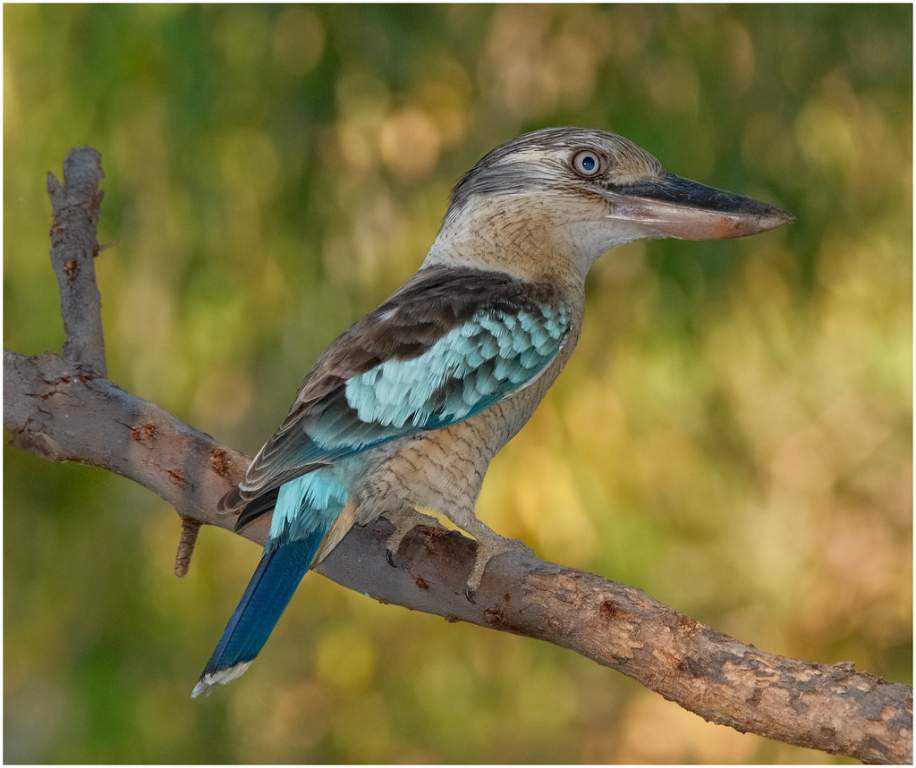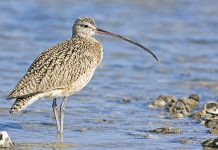Laughing Kookaburras are closely related to Blue-winged Kookaburras, which live on the northern and northeastern coastlines of Australia and New Guinea. Usually found in swampy coastal paperbacks or gallery forests along creeks, it prefers a wetter habitat than the Laughing Kookaburra.
It is also possible to find vast areas of both species living together along the Queensland coast from Brisbane to the Cape York Peninsula. There are areas where they overlap, especially in places where forests and cane fields overlap.
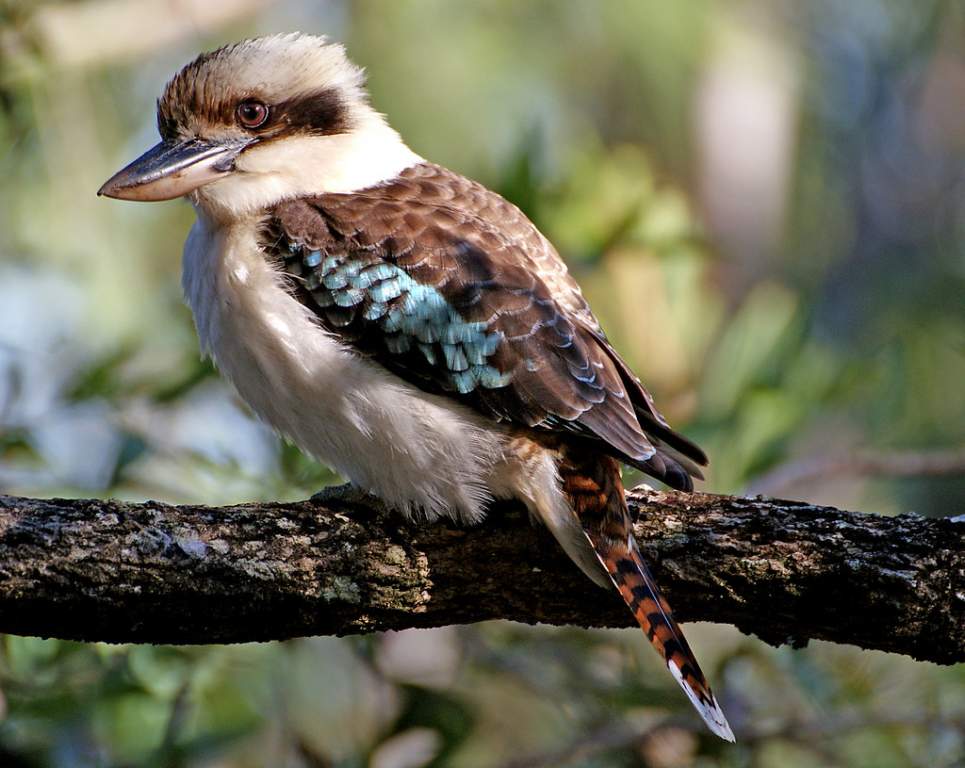
There, it is not unusual to see several Laughing Kookaburras and two or three Blue-winged Kookaburras perched on telephone wires, watching motionlessly for prey moving in the cane fields below. Both species exclude each other from their territories in shared habitats, almost as if they were members of the same species.
According to this phenomenon, which is quite common between closely related species, the differences between the two kookaburras evolved more in their form than in their feeding and nesting requirements, which remain the same despite diverging as separate species in the past.
The way each species defends its territory against the other appears to differ from the way it defends its territory against its own species members. There is no ritualistic display for the Blue-winged Kookaburra-the family circles and chases an intruder loosely and raucously, whereas the Laughing Kookaburra performs in a neat way, passing each other in midair like trapeze artists, with laughter reverberating between disputing groups.
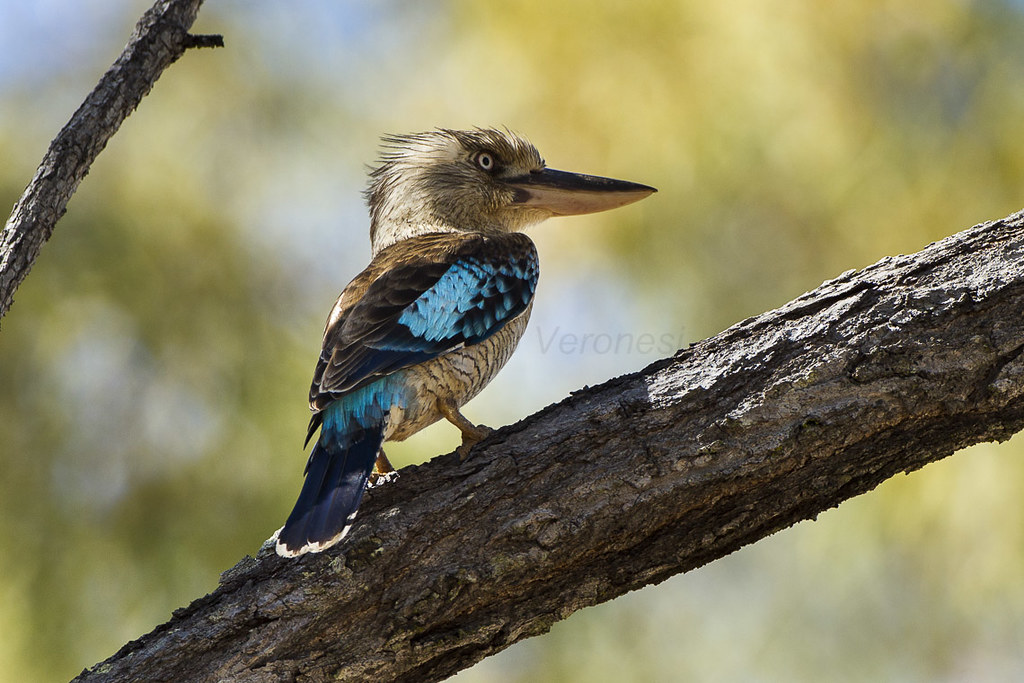
Normally, both species announce their territories with morning and evening choruses to maintain mutually exclusive land rights; these choruses sometimes mix the Laughing Kookaburra’s less frantic song with the Blue-winged Kookaburra’s high-pitched trilling howl. Both species feed, mate, and construct nests with the assistance of auxiliary workers during breeding. This kind of social activity appears to have an impact on the biology and population of every species. A Blue-winged Kookaburra family can have up to 12 members, which is the only difference.
It is also known as Leach’s Kookaburra or Howling Jackass. This bird measures between 380 and 400 millimeters, including its 60-70 millimeter bill. A male has a dirty brown head, lightly to strongly streaked with off-white. There is a brownish sheen to the mantle and scapulars, and a glistening sky blue to the lower back and rump.
There is a strong mid-blue suffusion on the shoulders (centers) that is entirely sky-blue. A large white band runs through the base of the juvenile flight feathers. The tail is mid-blue with a white tip. Plain white throat. Off-white to the cream-buff breast to crissum, with thin gray-brown bars variably scalloped.
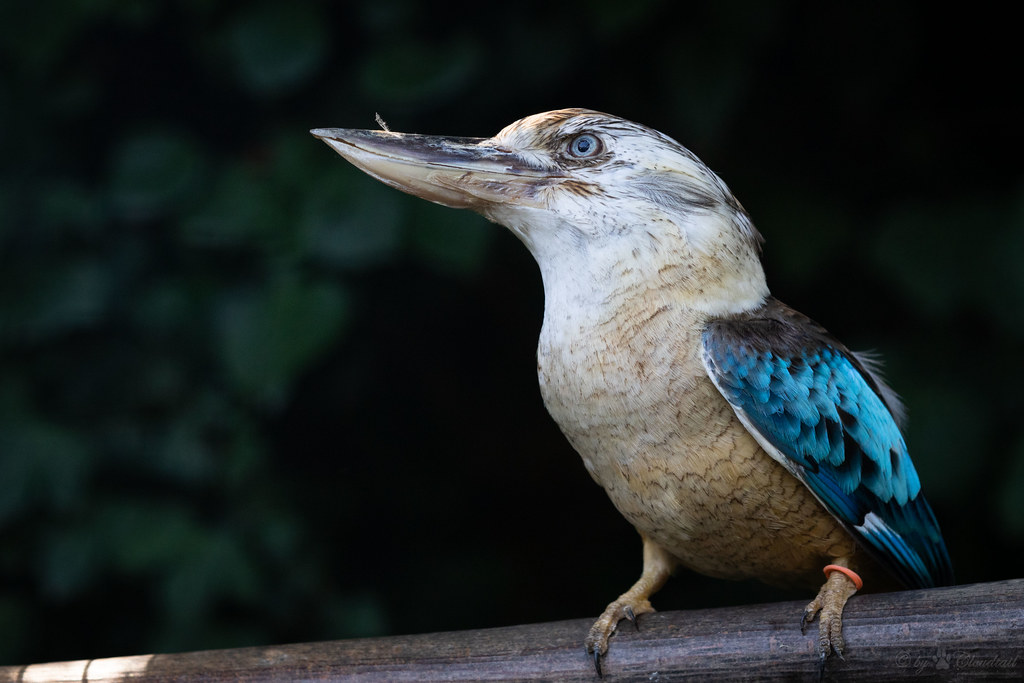
The mandible has a cream bone in the mandible and a dark maxilla. The feet are pale olive-cream to flesh-grey in color, with dusky claws. Female birds have tail feathers that are russet barred with blue-black. As the female matures, her ventral scalloping becomes paler.
Blue-winged Kookaburra call consists of six to seven short, sharp, or pronounced trills. Chorus of high-pitched coughing cackles sung in rapid succession. It begins with a coarse huff-huff-huff that develops into a sharp bark of ow-ow-ow and a series of trills; it ends abruptly. September-January is the breeding and nesting season.
Like the Laughing Kookaburra, it nests in hollow tree cavities but prefers termite mounds and baobab trees. The bird lays, two to four eggs, white, rounded, and 45 x 35 mm in size. It takes about 23–24 days for members of the group to incubate. In 5 weeks, the young bird fledges.
It is distributed in coastal and subcoastal eucalypt woodlands of northern Australia and in the eucalypt woodlands of southern New Guinea. There are two races of Australian cattle: one with a large head, and the other with a smaller head and marked with a dark streak from the Kimberleys region of Western Australia to Toowoomba, in the upper Brisbane River region of Queensland.
